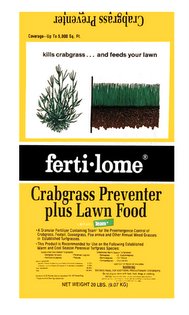PLANTS OF MERIT PROGRAM ASSISTS HOME GARDENING SUCCESS(ST. LOUIS): Gardeners choosing plants for their gardens this year should first consider the Missouri Botanical Garden's dependable, recommended "Plants of Merit." Fifty-five selections have been named for 2006, including several first-time additions. Each has proven to be outstanding and reliable in the lower Midwest growing region, USDA zones five and six.
Established in 1999, the Plants of Merit program has quickly become an industry model among comprehensive plant recognition programs, focused on regionally promoting ecologically responsible diversity. The program, established by the Missouri Botanical Garden's William T. Kemper Center for Home Gardening in partnership with Powell Gardens and the University of Missouri Extension, shares expert industry knowledge of annuals, perennials, trees, shrubs and vines with home gardeners. Plant selections are dependable performers yet often underutilized by home gardeners because limited information about them is available.
"With Plants of Merit, a homeowner can save both money and time," said Mary Ann Fink, program coordinator. "The program assists gardeners in creating a pretty garden or landscape that can be easily managed without chemicals and extra work."
Each year Plants of Merit sponsors - including industry professionals and associates, institutional representatives and the gardening community - present a consulting committee with a variety of plants for possible inclusion in the list. The committee compiles the final Plants of Merit selections by focusing on what makes a quality plant. Selections are considered "good neighbor plants" for being attractive, disease and pest resistant, and non-invasive, therefore promoting responsible diversity. Plants' performances are observed for two to five years, depending on category, in order to determine their reliability. Pictures, descriptions and information on growing conditions are including in the Plants of Merit resource guide. Once plants have gained mainstream recognition and appeal, they are graduated to emeritus standing.
Among several new additions to the 2006 Plants of Merit guide is Elephant ear (Xanthosoma 'Lime Zinger'), an annual with large tropical green foliage, providing a perfect contrast with ferns and hostas. It thrives in partial shade, with leaves that grow up to 30 inches in length on plants that grow between three and four feet tall.
The 2006 guide also notes several habitat plants or selections that are attractive to wildlife. Cypress vine (Ipomoea quamoclit), for example, is an annual from the morning glory family that makes a superb cover for fences and trellises, growing between four to six feet long and potentially reaching up to 10 feet long. Its tubular scarlet flowers are magnets for hummingbirds. The Seven-son flower tree, (Heptacodium miconiodies) is a small ornamental increasing in popularity for its fragrant clusters of white flowers that bloom from late August to late September. By flowering at a young age, the tree offers butterflies a reliable nectar source year after year. Flowers are followed by a showy display of purplish-red fruits, offering multiple seasons of interest.
Today, the Plants of Merit program is financially sponsored by 60 green community members, including retail nursery and garden centers. The 2006 guide can be purchased for $2 from the Kemper Center or the Garden Gate Shop of the Missouri Botanical Garden, 4344 Shaw Blvd. in St. Louis, or from any program sponsor. View the guide free of charge online at
www.plantsofmerit.org.
For more information on the Plants of Merit program, including how a community or group can earn a Merit Garden Recognition, call Mary Ann Fink at (314) 577-9443.
GREENSCAPE GARDENS IS A PROUD SPONSOR OF THE PLANTS OF MERIT. IN ADDITION, WE HAVE ONE OF THE LARGEST DISPLAY GARDENS OF PLANTS OF MERIT. MANY OF THE PLANTS HAVE BEEN PLANTED FOR SEVERAL YEARS.








